Results
-
 £144.99
£144.99Suite Marchigiana (Concert Band - Score and Parts)
According to a famous statement by Herder, folk songs represent the archives of a nation's knowledge, the expression of its heart and theimage that reflects its history and identity. Suite Marchigiana is a three movement piece, inspired by folk songs from the Marche in central Italy, a region with a very ancient and rich folkloristic heritage. The first movement elaborates on the well-known Pasquella. The Pasquella comes from a traditional winter begging ritual where a group of musicians go from house to house singing verses, wishing their audience good health, wealth and abundance, in return for small amounts of money, food and wine. The second movement is an Andante Triste inspired by an old song called Sona la mezzanotte (The Clock Strikes Midnight), a melancholic song that reminds us of unhappy love stories, bereavement, and so on. Luciano Feliciani concludes the suite with the Saltarello Marchigiano, which is bright and sparkling, and therefore in complete contrast with the previous movement. Although unproven, the Saltarello is thought to have its origins in the 'saltatio' (a latin dance). While the choreae were group dances, circular in structure and with a rhythmic progression, the saltationes were more lively in character. The fast, frenetic and joyous saltarello was without any doubt the most famous musical expression of rural central Italy in the nineteenth century. 10:20
Estimated dispatch 7-14 working days
-
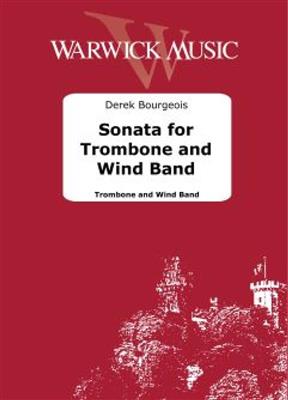 £75.00
£75.00Sonata - Derek Bourgeois
This work, composed in 1998, was commissioned by the American trombonist Don Lucas as a work for trombone and piano and first performed by him in Birmingham on 19th May 2000. Subsequently, I arranged the music for both solo trombone and brass band and solo trombone and wind band so that it now exists in three formats. The first movement, in B flat major, is brisk and energetic, and is cast in sonata form. The second subject is gentler and more lyrical. The second movement, a scherzo in C major, is the most complex of the four. Basically the structure is a rond. For a long time the music remains in the opening 5/8 time until a new theme introduces more broken rhythms in a more jazzy idiom. After a return of the opening theme the following episode is more tonally ambiguous. Finally, the main theme returns to round off the movement. The third movement, a lyrical adagio, is really one long extended melodic flow. The harmonies are lush and the textures simple and direct. The tonal center is A minor, but the music meanders through so many keys, that this key centre is heavily disguised. The finale is a fiery affair. G minor is really its home key, but throughout the movement the music moves about a lot and the second subject is first heard in A flat minor. The movement's underlying sonata structure is masked not only by its loose tonality but also by its frequently changing time signatures. Like the first movement the second subject is more lyrical in nature and for a while it seems that the music will end peacefully, but a final flurry heralds a triple forte unison on the home note of the first movement - B flat. Derek Bourgeois
Estimated dispatch 7-14 working days
-
 £144.99
£144.99Suite Marchigiana - Luciano Feliciani
According to a famous statement by Herder, folk songs represent the archives of a nation's knowledge, the expression of its heart and theimage that reflects its history and identity. Suite Marchigiana is a three movement piece, inspired by folk songs from the Marche in central Italy, a region with a very ancient and rich folkloristic heritage. The first movement elaborates on the well-known Pasquella. The Pasquella comes from a traditional winter begging ritual where a group of musicians go from house to house singing verses, wishing their audience good health, wealth and abundance, in return for small amounts of money, food and wine. The second movementis an Andante Triste inspired by an old song called Sona la mezzanotte (The Clock Strikes Midnight), a melancholic song that reminds us of unhappy love stories, bereavement, and so on. Luciano Feliciani concludes the suite with the Saltarello Marchigiano, which is bright and sparkling, and therefore in complete contrast with the previous movement. Although unproven, the Saltarello is thought to have its origins in the 'saltatio' (a latin dance). While the choreae were group dances, circular in structure and with a rhythmic progression, the saltationes were more lively in character. The fast, frenetic and joyous saltarello was without any doubt the most famous musical expression of rural central Italy in the nineteenth century.
Estimated dispatch 7-14 working days
-
£7.95
A Starry Night - Score only - Joy Webb
Program NotesOne of the most popular Christmas songs to have been written in recent years, Joy Webb's A Starry Night was originally a huge success for The Salvation Army's 1960s pop phenomenon "The Joystrings." The breadth of the song's popularity continues to be a source of amazement to the writer herself, but the attractive simplicity and accessibility of the tune has made it one of the most widely used Christmas songs, particularly in schools and playgroups!Andrew Mackereth, who is the Bandmaster of the Salvation Army band at Nuneaton in Warwickshire and also conductor, composer and arranger for The Salvation Army Symphonic Wind Ensemble, has brought his considerable skills as an arranger and composer for both brand and concert band to this familiar Christmas song and produced an attractive dance-like Calypso-style setting that is already gaining huge popularity in its brass band form.This arrangement for concert band is sure to contribute to the ongoing popularity of this song, and will undoubtedly enhance any concert band's Christmas programme too.
Estimated dispatch 7-14 working days
-
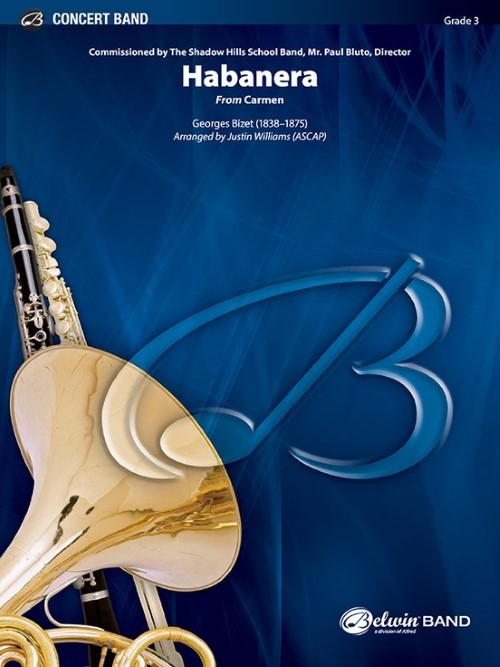 £64.50
£64.50Habanera (Concert Band - Score and Parts) - Bizet, Georges - Williams, Justin
French composer Georges Bizet's four-act opera, Carmen , remains one of the most popular and performed works in the classical canon. This piece is perhaps the most popular portion of the opera. Its playful character and flirtatious mood are exposed in this contemporary setting.Duration: 3:00
Estimated dispatch 7-14 working days
-
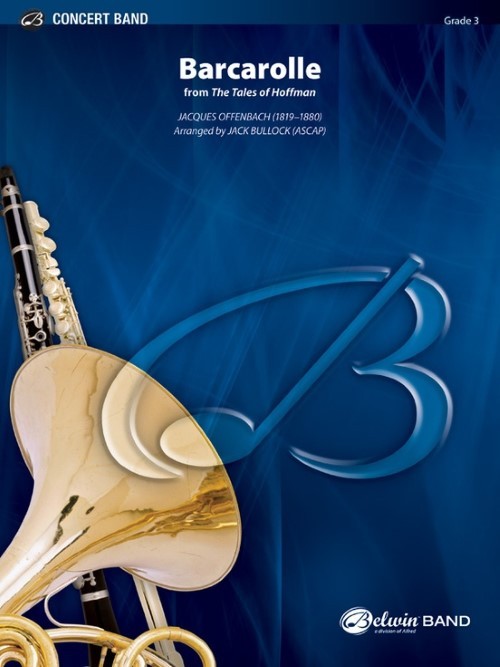 £66.95
£66.95Barcarolle (from Tales from Hoffman) (Concert Band - Score and Parts) - Offenbach, Jacques - Bullock, Jack
Barcarolle, one of the most famous operetta melodies, is presented here for concert band. Its "rolling" melody and simple harmonic structure have made it a favourite the world over. Written by one of the originators of the operetta musical form, Jacques Offenbach, it has endured for over 150 years. A historic work in a contemporary setting... a most musical gem!Duration: 2.45
Estimated dispatch 7-14 working days
-
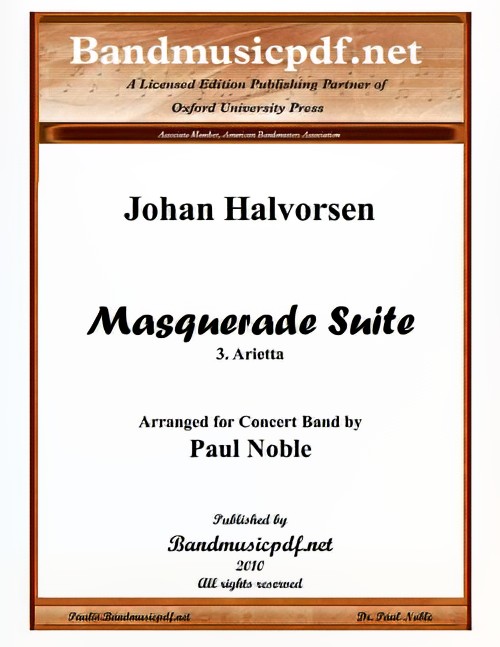 £75.00
£75.00Arietta (from Masquerade Suite) (Concert Band - Score and Parts) - Halvorsen, Johan - Noble, Paul
Masquerade Suite was composed by Johan Halvorsen, one of the best-kept secrets of Norway. Not only was he an accomplished violinist and conductor, but also he was among the most prominent Norwegian composers in the generation following Edvard Grieg. His compositions develop the national Romantic tradition of his friends Grieg and Svendsen, but his was a distinctive style marked by brilliant orchestration inspired by the French Romantic composers. The original version of Masquerade Suite had nine movements. Paul Noble has selected five of the most suitable movements for band transcription and grouped them into this beautiful suite. The U.S. Navy Band in Washington, D.C. gave the premiere performance of this work. The first movement, Holberg Overture, sets the mood, pace, and musical themes for the entire suite, with rousing opening themes, followed by a grand fugue in the development section. This is clearly a piece for accomplished bands, giving all wind players a real workout. Each of the succeeding movements has a distinctive style, making the suite a significant addition to the repertoire of the Concert Band. Especially noteworthy is the Arietta, the easiest of the movements, and can easily stand alone with its haunting flute and oboe melodies and dramatic crescendo, the crisp solos in the Molinasque, and the final movement, which is very much like a circus march, fast, lively and short!
Estimated dispatch 7-14 working days
-
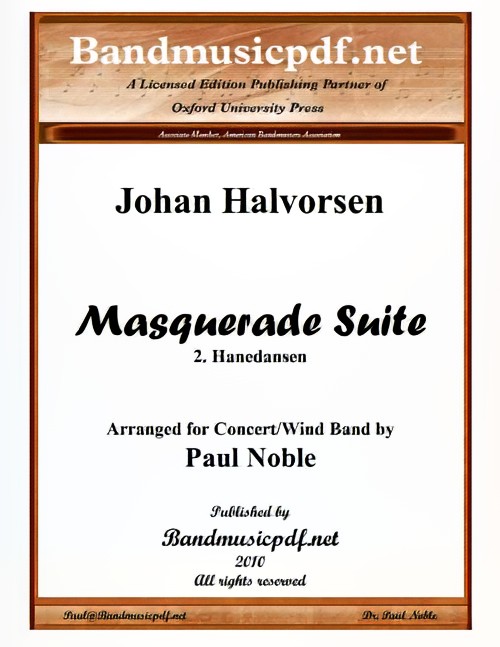 £75.00
£75.00Hanedansen (from Masquerade Suite) (Concert Band - Score and Parts) - Halvorsen, Johan - Noble, Paul
Masquerade Suite was composed by Johan Halvorsen, one of the best-kept secrets of Norway. Not only was he an accomplished violinist and conductor, but also he was among the most prominent Norwegian composers in the generation following Edvard Grieg. His compositions develop the national Romantic tradition of his friends Grieg and Svendsen, but his was a distinctive style marked by brilliant orchestration inspired by the French Romantic composers. The original version of Masquerade Suite had nine movements. Paul Noble has selected five of the most suitable movements for band transcription and grouped them into this beautiful suite. The U.S. Navy Band in Washington, D.C. gave the premiere performance of this work. The first movement, Holberg Overture, sets the mood, pace, and musical themes for the entire suite, with rousing opening themes, followed by a grand fugue in the development section. This is clearly a piece for accomplished bands, giving all wind players a real workout. Each of the succeeding movements has a distinctive style, making the suite a significant addition to the repertoire of the Concert Band. Especially noteworthy is the Arietta, the easiest of the movements, and can easily stand alone with its haunting flute and oboe melodies and dramatic crescendo, the crisp solos in the Molinasque, and the final movement, which is very much like a circus march, fast, lively and short!
Estimated dispatch 7-14 working days
-
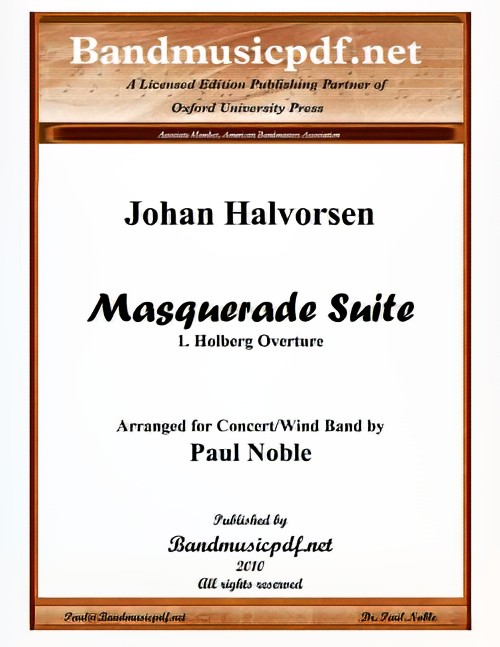 £75.00
£75.00Holberg Overture (from Masquerade Suite) (Concert Band - Score and Parts) - Halvorsen, Johan - Noble, Paul
Masquerade Suite was composed by Johan Halvorsen, one of the best-kept secrets of Norway. Not only was he an accomplished violinist and conductor, but also he was among the most prominent Norwegian composers in the generation following Edvard Grieg. His compositions develop the national Romantic tradition of his friends Grieg and Svendsen, but his was a distinctive style marked by brilliant orchestration inspired by the French Romantic composers. The original version of Masquerade Suite had nine movements. Paul Noble has selected five of the most suitable movements for band transcription and grouped them into this beautiful suite. The U.S. Navy Band in Washington, D.C. gave the premiere performance of this work. The first movement, Holberg Overture, sets the mood, pace, and musical themes for the entire suite, with rousing opening themes, followed by a grand fugue in the development section. This is clearly a piece for accomplished bands, giving all wind players a real workout. Each of the succeeding movements has a distinctive style, making the suite a significant addition to the repertoire of the Concert Band. Especially noteworthy is the Arietta, the easiest of the movements, and can easily stand alone with its haunting flute and oboe melodies and dramatic crescendo, the crisp solos in the Molinasque, and the final movement, which is very much like a circus march, fast, lively and short!
Estimated dispatch 7-14 working days
-
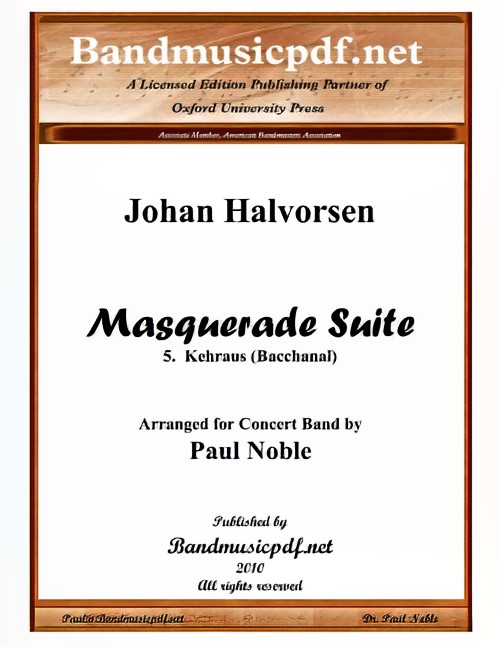 £65.00
£65.00Kehraus (from Masquerade Suite) (Concert Band - Score and Parts) - Halvorsen, Johan - Noble, Paul
Masquerade Suite was composed by Johan Halvorsen, one of the best-kept secrets of Norway. Not only was he an accomplished violinist and conductor, but also he was among the most prominent Norwegian composers in the generation following Edvard Grieg. His compositions develop the national Romantic tradition of his friends Grieg and Svendsen, but his was a distinctive style marked by brilliant orchestration inspired by the French Romantic composers. The original version of Masquerade Suite had nine movements. Paul Noble has selected five of the most suitable movements for band transcription and grouped them into this beautiful suite. The U.S. Navy Band in Washington, D.C. gave the premiere performance of this work. The first movement, Holberg Overture, sets the mood, pace, and musical themes for the entire suite, with rousing opening themes, followed by a grand fugue in the development section. This is clearly a piece for accomplished bands, giving all wind players a real workout. Each of the succeeding movements has a distinctive style, making the suite a significant addition to the repertoire of the Concert Band. Especially noteworthy is the Arietta, the easiest of the movements, and can easily stand alone with its haunting flute and oboe melodies and dramatic crescendo, the crisp solos in the Molinasque, and the final movement, which is very much like a circus march, fast, lively and short!
Estimated dispatch 7-14 working days
